On this page, you’ll find 10 proven ways to get better at guitar. If you follow any one of the suggestions below, it's almost guaranteed that your guitar playing will improve!
How To Get Better At Guitar – Introduction

How long have you been playing the guitar? Are you as good a player as you should be? On this page is useful advice aimed at guitarists who feel that their playing could–and should–be better.
The ten tips below will be of particular help if you feel that your playing has “plateaued”, or if you are dissatisfied with where you are as a guitarist and want to take your playing to the next level.
How To Get Better At Guitar: Ten Tips To Improve Your Playing
1. Learn Something New!
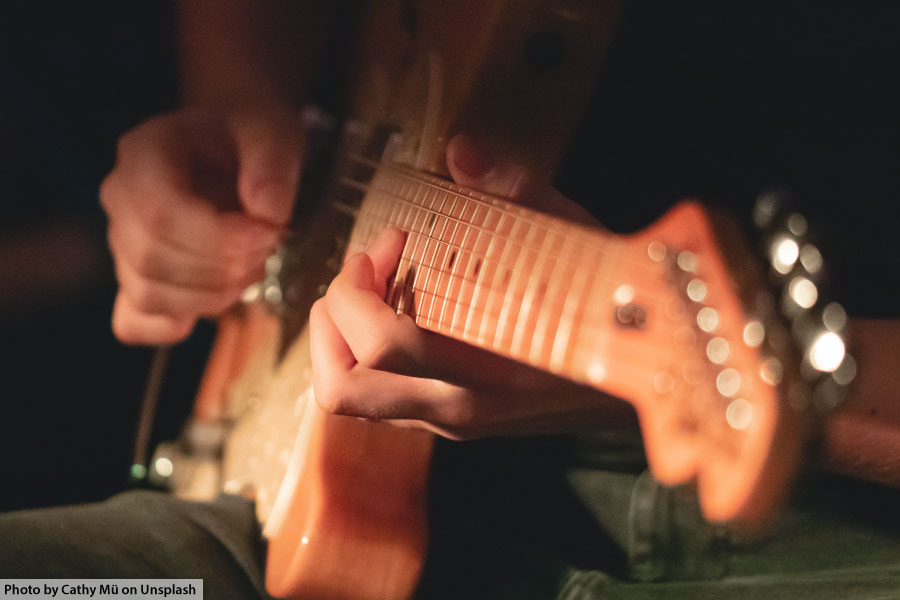
It could be a new scale, a new chord, or even a new playing technique; expanding your knowledge will make you a better guitar player.
To inspire you, we’ve listed some things you could try below:
New scales you could learn include the Dorian modal scale, which can add an interesting new color to minor blues improvisations, or the Phrygian dominant scale, which can add an exotic flavor to rock and metal solos.
More suggestions for scales to learn can be found on these pages:
Other things you can do with scales include: learning to play a scale you already know in multiple positions up and down the neck, and learning to play a scale with a different fingering. For example, try learning how to play a major scale with a three-note per string fingering.
You can improve your knowledge of guitar scales with our Guitar Scales Book.
New chords you could learn include add6 and add9s, which can sound great in the place of standard major chords. Jazzy dominant chords such as dominant 9, 13 or even something crazy like a Dominant 7th Sharp 5 Flat 9 can be used in the place of standard 7th chords to spice up otherwise stale-sounding progressions.
More ideas for new chords to learn can be found on this page: Learning More Advanced Guitar Chords, or you could always get our comprehensive guitar chord book.
Learn a new playing style. If you’re a blues guitarist, you could add some flatpicking licks to your repertoire. Rock guitarists could learn more advanced picking techniques, such as sweep picking or economy picking. (You can find out about such techniques on this page: Shred Guitar.)
Electric guitarists could invest in either an acoustic guitar and start playing fingerstyle, or a classical guitar and learn how to play classical guitar. (You'll find a useful guide to learning classical guitar on this page: Learning Classical Guitar.)
Learn some theory. If you’ve never sat down and studied music, you could start by learning about diatonic chords, then explore modulation into different keys using common chords (chords shared between two keys) and progressions such as II V I (and its minor equivalent).
A daunting undertaking for some guitarists reliant on tab and chord charts is to learn to read music. There are many great books on this subject, and being able to read music will add a whole new dimension to your music making.
You'll find a brief guide to reading music on this page: How To Read Music For Guitar
2. Practice At A Regular Time Each Day
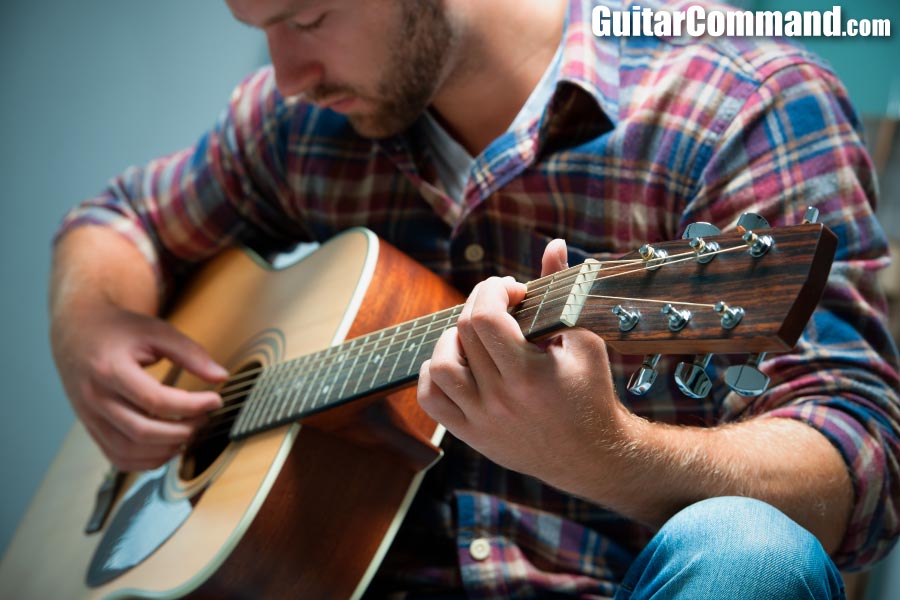
We’re all guilty of spending countless hours “noodling” on guitar, playing anything that comes into our heads.
Over one year, spending fifteen minutes a day noodling is the equivalent of almost four days (3.802083 days, to be precise)! That’s a lot of time that could have been spent on actively improving your playing.
Even fifteen minutes of dedicated practice every weekday will make a big difference after a year.
Try not to skip practice sessions; fifteen minutes each day is more valuable than one long session every week.
Practicing in short, but regular sessions helps maintain momentum, ensures you’re not trying to take too much in at one sitting, and is often more practical to fit into a busy lifestyle. (Of course, sessions can be longer if you have that luxury, so long as they're regular.)
Likewise, break long pieces or songs up into smaller parts, and concentrate on learning one of these smaller parts each session (perhaps after performing a standard warm-up / finger exercise routine).
3. Practice With A Metronome

Playing with a metronome is one of the very best ways of getting better at guitar. Handy, guitar case-sized electric metronomes are available to buy very cheaply. There are also free metronomes available online, and metronome apps can be downloaded onto your phone.
Playing to a rigid tempo ensures that your playing is precise and quickly exposes bad habits or areas that need work.
For example, you may be surprised by how much you were previously slowing down to play a certain part of a guitar line. Once you’re aware of this, you can slow down the whole piece and gradually build up speed until you can play it all the way through at performance tempo.
Forcing yourself to play at tempos that are slightly outside of your comfort zone is one of the best ways to improve the speed and fluency of your playing.
Whether you’re learning a fingerstyle piece or practicing scales, start slowly and only increase the tempo once you can get through the whole piece without making any mistakes. Raise the tempo in small increments, and don’t try to do too much too soon.
4. Make Sure That You Play Every Note Correctly
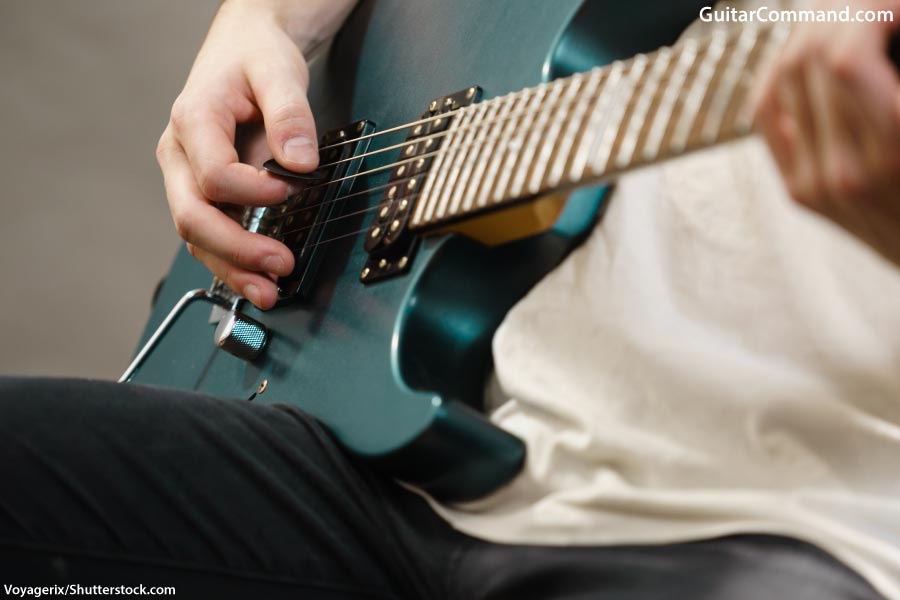
Don’t ignore problem notes. It’s all too easy to play the same licks or phrases over and over again with the mistakes left in.
Slow down and concentrate on playing every note perfectly before gradually getting back up to performance tempo.
If you're playing chords, play each note individually to make sure that each is being fingered correctly.
5. Buy A Guitar Book And Work Through It Methodically
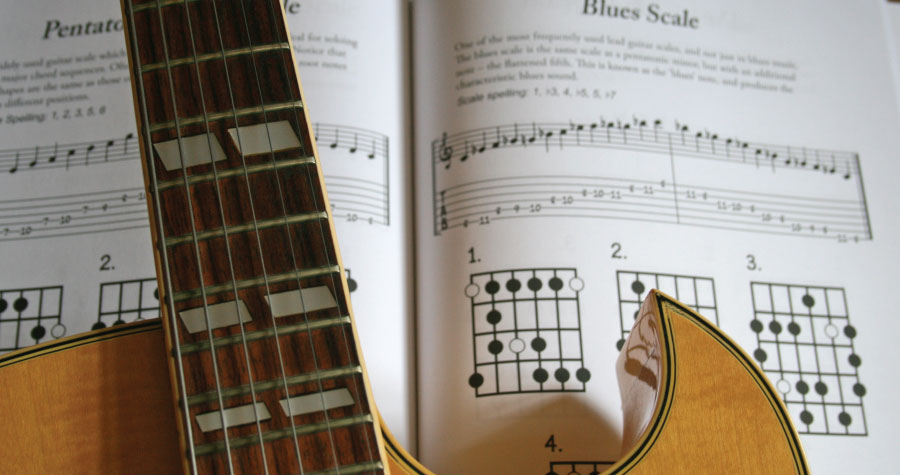
It’s all too easy to skim through a guitar book then put it on a shelf, never to be opened again.
In order to gain the maximum benefit from a book, work through it from cover to cover, taking a few pages at a time.
Don’t skip the bits you think that you already know; going back over the basics can help solidify areas of your playing that you may not have been entirely sure of previously.
You can see some good books on guitar playing on these pages:
6. Record Yourself Playing

Before unleashing your playing on the general public, it can be a good idea to hear how it sounds yourself. By recording yourself, you can concentrate fully on the sound of your performance.
It can be quite hard to listen to yourself at first, but doing so objectively can help you identify areas that need work.
Most phones or tablets have recording apps; we use an app called ‘Easy Voice Recorder’ on our Android device, and many similar apps are available. We also have a Zoom H1 digital recorder in our desk drawer for when better audio quality is needed.
7. Play With Other People

In this day and age, with many musicians working alone on their computers, it’s easy to forget the social aspect of music making.
Meeting other musicians in the flesh can have a positive effect not only on your playing, but in many other aspects of your life.
Playing with other people, especially in front of an audience, will really help to sharpen up your playing and general musicianship.
8. Transcribe Music
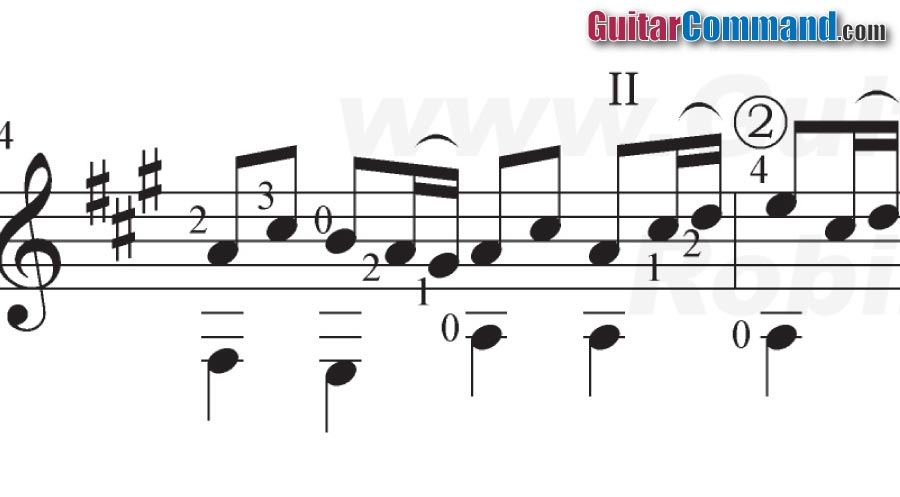
One of the very best things you can do to improve your lead playing is to transcribe other guitarists’ solos.
You’ll probably want to work through a solo a bar or phrase at a time, either committing it to memory or writing it down.
Working out other guitarist’s solos by ear is time-consuming but extremely rewarding. You’re almost guaranteed to pick up new licks, techniques and ways of approaching the fingerboard.
In addition, your own lick arsenal will remain nicely topped up; there’s no shame in converting other player’s licks and making them your own.
If your playing is stuck in a rut, this is a sure-fire way of getting it moving again.
9. Get Lessons
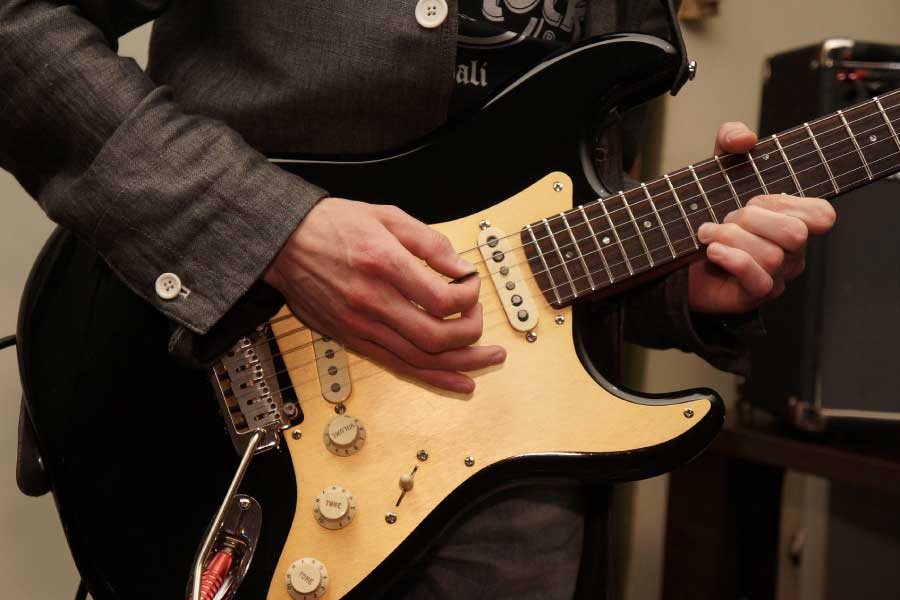
Getting lessons from a professional guitar teacher is an obvious step to take if you are serious about getting better at guitar.
A good teacher will help you achieve your guitar playing aims by teaching you what you want to know and making sure you haven’t fallen into any bad habits.
The personal aspect of getting lessons, not to mention the financial outlay required, also help to focus the mind.
10. Play In Public

When all is said and done, learning a musical instrument is about performance. Whether you’re a punk rocker or a classical guitarist, nothing will focus your mind quite as much as an impending performance!
Playing in front of other people changes everything: your playing is put under a microscope and you’ll soon realize whether or not you have been practicing the right things!
The good news is that performing gets easier the more you do it, and your playing will also improve in leaps and bounds.
- If you’re not a born performer, there are plenty of tips for overcoming nerves on this page: How To Overcome Stage Fright
Now Get Inspired!

It’s all too easy to get stuck in a rut, both with your playing and the music that you listen to. You can stay inspired by: going to see guitarists and bands; reading biographies on (or autobiographies by) musicians you admire; listening to guitar albums, seeking out new music, and being receptive of music that falls outside of your preferred style(s).
Chances are it was when you first took up the guitar that you made the most improvement in the shortest space of time. Would you like to continue to improve at the same rate? Start by listening to music that inspires you to want to play and improve!
SMART Goal-Setting For Guitarists?
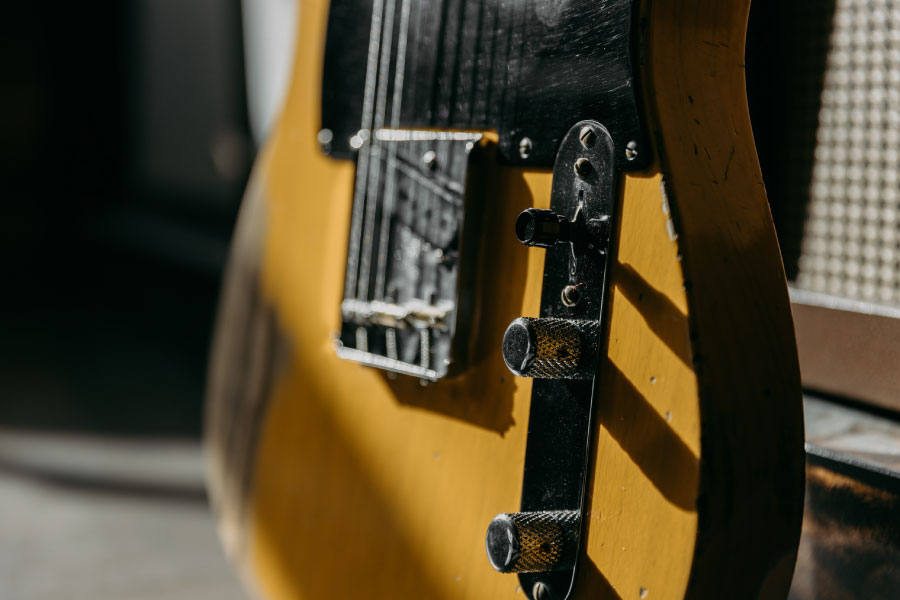
Above are ten sure-fire ways of getting better at guitar – follow them and you’ll almost certainly begin to improve.
The following is provided as food for thought; feel free to skip this part if this kind of thing makes you feel nauseous! We’ve included it because having a clear vision of what you want to achieve can be beneficial–even in creative and artistic endeavors.
Most personal development gurus identify goal setting as being a major part of self-improvement, or, in our case, getting better at guitar.
Goal setting is difficult in music, as much of what a musician does is unquantifiable, but perhaps there is some value in applying corporate-style techniques to our ambitions as guitarists?
You may have heard of S.M.A.R.T. criteria for goals. “SMART” is an acronym for: specific, measurable, achievable, relevant and time-bound.
Let’s apply it to playing a certain guitar solo at performance speed:
- Specific: Clearly define the goal.
State the name of the guitar solo you want to play and the exact tempo you want to achieve.
- Measurable: Quantify your goal.
Use a metronome or a tempo app to measure your progress. Track your current tempo and set a specific target tempo, such as increasing from 80 BPM to 120 BPM.
- Achievable: Ensure your goal is realistic.
Assess your current skill level and determine if reaching the desired tempo is achievable within a reasonable timeframe. If your current tempo is 60 BPM and you want to reach 200 BPM in a week, that might be unrealistic.
- Relevant: Align your goal with your musical objectives.
Consider how achieving this tempo in the chosen piece will contribute to your overall guitar-playing goals and whether it's relevant to your musical style and aspirations.
- Time-bound: Set a deadline.
Determine when you want to achieve this goal. For example, "I will play the solo at 120 BPM within three months."
Putting it all together: "I will play the solo at 120 BPM within three months. I will start from my current tempo of 80 BPM and gradually increase it by 5 BPM each week during my practice sessions, using a metronome to track my progress."
By following the SMART goal-setting framework, you create a clear and actionable plan to work towards your desired guitar-playing tempo for the specific piece, making it easier to track your progress and stay motivated throughout your practice sessions.
Let us know what you think of any of the tricks and tips on this page, or if you have any suggestions of your own on how to be a better guitarist.



I’ve been playing for 25 years, and I’m always trying to improve. Great overview and looking forward to reading more of these.
It seems like an up hill struggle but I am up for it i have a good imagination when it comes to playing the guitar but technically I am miles behind. Thank you for your meaningful advice. From Ken to some helpful people
Hi Ken, you’re welcome!
Best of luck with your playing!
Regards,
The Guitar Command Team